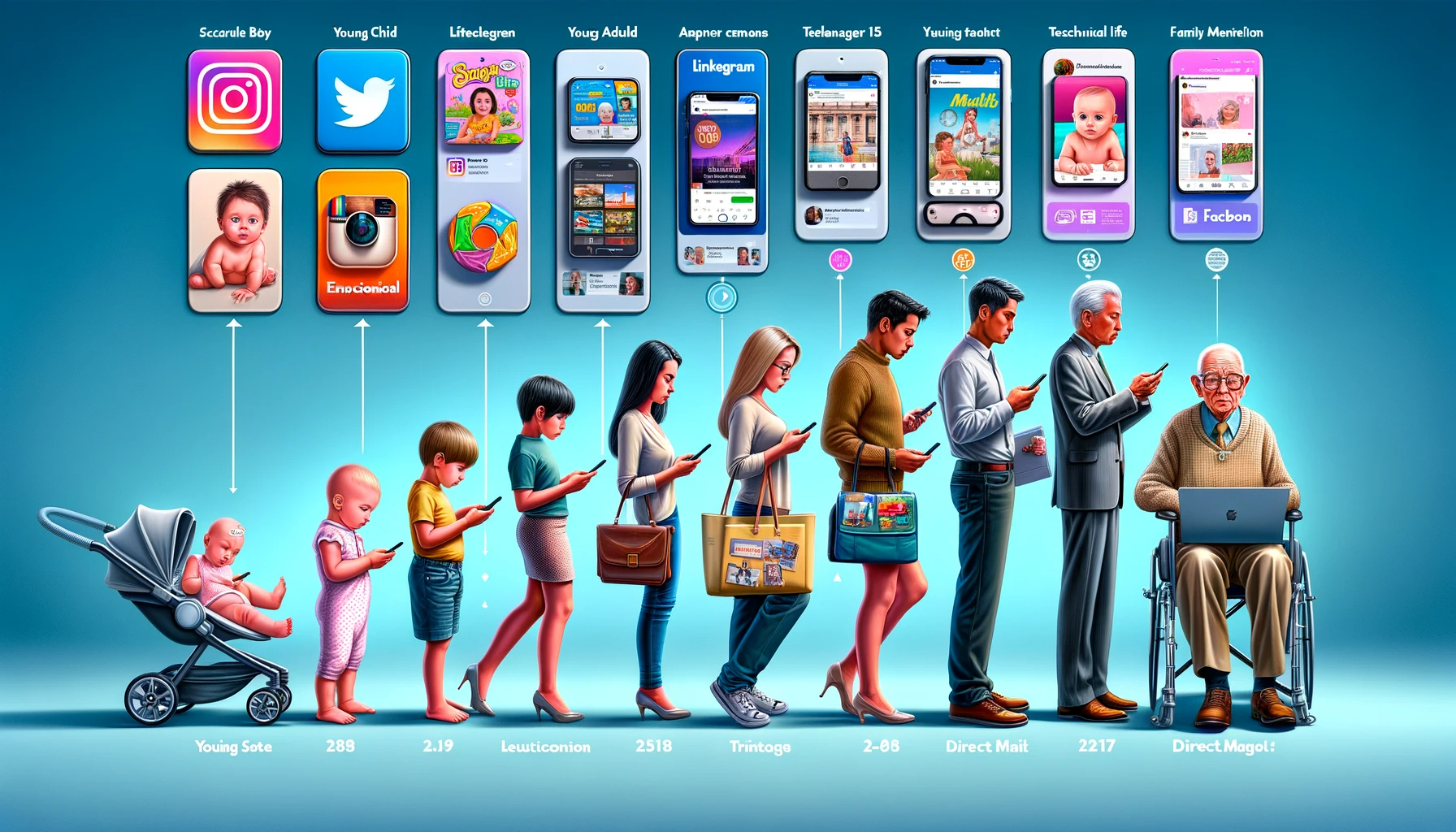The complexity of marketing across generational divides necessitates a deep understanding of varied behavioral patterns and media consumption habits. Here, we delve into the technical strategies and contextual backgrounds for effectively marketing to different age cohorts, elucidating both orthodox and unorthodox methodologies.
Silent Generation (Born before 1945)
Technical Strategy (Traditional): Utilize data analytics to target this demographic through direct mail and print media. Techniques such as A/B testing can refine the value-driven messaging that resonates with this group.
Unorthodox Approach: Employ nostalgia marketing through the revival of vintage aesthetics using AR filters, tapping into the emotional connection with the past while introducing them to modern technology.
Contextual Content Example: A direct mail campaign using variable data printing technology to personalize messages, coupled with an AR-powered vintage radio app that overlays a historical narrative onto contemporary settings.
Baby Boomers (Born 1946-1964)
Technical Strategy (Conventional): Segment email marketing lists based on past purchase behavior and engagement, and tailor content-rich newsletters that emphasize product benefits and brand integrity.
Unorthodox Approach: Develop virtual reality (VR) experiences for property tours or historical experiences, offering an immersive trip down memory lane or facilitating informed purchasing decisions.
Contextual Content Example: A series of VR-enabled virtual home tours, marketed through segmented email campaigns, allowing Boomers to explore properties remotely.
Generation X (Born 1965-1980)
Technical Strategy (Mainstream): Employ cross-channel marketing, integrating social media platforms like Facebook with retargeting ads to capture this demographic’s attention across multiple touchpoints.
Unorthodox Approach: Create interactive, nostalgia-driven online quizzes or flash games that reference cultural moments from the 80s and 90s to engage this generation in a conversation about the past.
Contextual Content Example: A cross-platform campaign featuring an interactive quiz on Facebook that tests users on 90s trivia, with retargeted ads that offer merchandise or services related to their interests.
Millennials (Born 1981-1996)
Technical Strategy (Standard): Leverage big data and machine learning to craft personalized narratives on social media, enhancing user experience through predictive analytics and content optimization.
Unorthodox Approach: Integrate CSR (Corporate Social Responsibility) initiatives into marketing campaigns, using blockchain to ensure transparency and build trust with this socially conscious cohort.
Contextual Content Example: An Instagram story campaign that uses data-driven insights to create personalized narratives about a brand’s sustainability efforts, verified by blockchain records.
Generation Z (Born 1997-2012)
Technical Strategy (Typical): Harness the power of short-form video platforms through algorithmic trend analysis to create content that aligns with the Gen Z zeitgeist.
Unorthodox Approach: Employ AI-driven chatbots on social platforms for real-time engagement, using natural language processing to maintain a brand voice that resonates with this digitally native audience.
Contextual Content Example: A TikTok campaign where an AI chatbot interacts with users under posts, encouraging content creation around a product while adapting to the colloquial language of Gen Z.
Alpha Generation (Born after 2013)
Technical Strategy (Emergent): Focus on multi-platform content for parents and children, using SEO strategies to rank higher in educational and kid-friendly content searches.
Unorthodox Approach: Explore the gamification of education through AR, creating a layer of interactive play that promotes learning in an engaging environment.
Contextual Content Example: A mobile app that uses AR to turn everyday objects into educational games, marketed to parents through SEO-optimized blog content that ranks high in parenting and educational searches.
In summary, technical advancements have broadened the horizon for generational marketing, enabling brands to leverage a mix of traditional data-driven strategies and cutting-edge technologies. The context in which these strategies are applied can significantly enhance their effectiveness, creating a robust engagement across all age groups.
